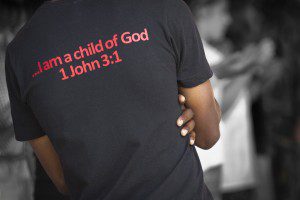 Book Review: Introduction to the History of Christianity, Second Edition, Edited by Tim Dowley
Book Review: Introduction to the History of Christianity, Second Edition, Edited by Tim Dowley
One of the most serious things at work today to keep Western Christianity shallow, eroding its transforming power and blunting its cultural impact for good and justice worldwide is our ignorance of what’s happened between Acts 28 and breakfast this morning. We know a few names even if we’re not sure why they’re important. I told a young Presbyterian seminary student interning with us that he will have people (and I meant seasoned members) under his ministry who think Calvin designs blue jeans. If we’re in a denominational group, maybe we know “our guy”. Lutherans have Luther. Methodists have Wesley. Baptists trace back to John (drum rim shot, cymbal crash!). It might scare us to know how many would believe that. We imagine that all through Christian history that “normal, orthodox, faithful” believers looked, acted and combed their hair like us. An old Baptist pamphlet called “The Trail of Blood” goes back to the time of Christ tracing all the groups in Christian history who were Baptist but didn’t know it, therefore demonstrating a pure spiritual line from the first century to today.
We cheat ourselves of encouragement, wisdom in time of trouble and discernment into Kingdom affairs through not knowing our past. The lives of both the great and obscure have much to teach and encourage us. The Roman Catholics are onto something in preserving the lives of the saints (but we must be rid of the overlay of legend and myth and get down to the bone.) These were real, usually deeply flawed, people. The same holds true for ministries and groups of all kinds in strife or trouble. Solomon said, in Ecclesiastes 1:9, “…there is nothing new under the sun.” The only thing different in today’s’ world from the Middle Ages is cultural overlay and Smartphones. All the church’s problems have happened before; only the wrapper is different. Even if we don’t learn what we can from the past, we can at least find out where the old messes are so we don’t step in them again.
For example, a Cal/Berkeley liberal who was a major player in the counterculture of the Sixties told me how he was amazed to learn that as he analyzed the strategies of the Civil Rights Movement of the time, he found that everything that King and others did had been done before. He found that the anti slavery strategy implemented by eighteenth century English Christians (including but not limited to Wilberforce and those around him) set the prototype for modern protest down to our day.
So what? Back in the 70s or early 80s, Tim Dowley edited something called A Handbook to the History of Christianity. It went through a couple of updates and is still available in print form. But Fortress Press now releases an e-book version that knocks the ball out of the park.Dowley invites new scholars to not only upgrade the existing work but to bring the narrative up to the current moment. In a nice touch, the preface includes capsule interviews from a few of these younger scholars telling why history both excites them and is meaningful for us – a human face.
Much of what technology does makes Dowley’s work highly accessible and the updating makes it all the more interesting. The reader will initially have to spend some time learning to navigate the content but what he or she finds will be so interesting and fun (Can I say that about church history?) that they won’t mind. You will probably lose track of time and have to tear yourself away. All the sidebars, timelines (great) and pictures from the original book are there with many new additions. The difference lies in their accessibility. Many of these are pop-ups which can be accessed from anywhere inside the eBook. And the pictures are embedded in slide shows according to the historical period.
Tim has also incorporated several new features to this eBook version and they conclude each chapter. “Chapter Check-in” gives a self test on key ideas in each chapter. “Digging Deeper” leads to additional information not in the main body of the text while “Back to the source” steers us to primary sources, the first hand writings, for any who want to pursue them. “Further Research” often links to resources outside the volume for further digging. Chapter 3 on expanding Christianity links to BBC historical resources on ancient Rome and the faith. But the most interesting new feature is called “Class Encounters” which helps readers and groups work through penetrating thought points for discussion.
Tim Dowley and all those who pulled together the Introduction to the History of Christianity have done their part and more to bring history to a wider audience. Many of us will benefit in many ways. Our quiz bowl teams (in school or at the local tavern or coffee shop) will be sharper. We will impress our friends who don’t have the book with how intelligent we sound (“The pastor is obviously digging into the Church Fathers. Tertullian made the same point in North Africa in the late second century.”) Home schoolers will love this. Students who have to take Church History will find great help. History lovers will have a blast. But at a deeper level, users of Introduction to the History of Christianity will gain a sense of being integrally interwoven with the lives of those the Bible calls that “great cloud of witnesses” (Hebrews 12:1). We’ll sense ourselves joined at the hip with others transcending centuries and cultures; we will make new friends with dead people who have much to teach us and who are yet more alive at this moment than we can imagine. We will be part of something and, more importantly, Someone bigger than time can hold.
An example. Theresa of Avila (16th century Spanish Catholic mystic – if you had Dowley’s book, you could look her up!) went to the privy (outhouse) with a prayer book in one hand and a cinnamon roll in the other. Satan appeared to her in the privy (must be a large privy) to berate her for her irreverence. She responds, “The sweet roll is for me, the prayers are for God, and the rest is for you.” This is now my life verse.
God has sprinkled good medicine across centuries of dealing with His people – good medicine both to lift, to impart wisdom, to heal and to spur us to worship. Introduction to the History of Christianity gives us an attractive and fascinating key to unlock these both for the knowledgeable and the novice.
Watch a demo of Introduction to the History of Christianity, Second Edition — and learn more this new Inkling interactive digital textbook — here!
David Swartz pastors Bethel Baptist Church in Roseville, Michigan. He thinks that jazz is sacred music, that books are better company than most people, and that university towns rock. He blogs at geezeronthequad.com.











